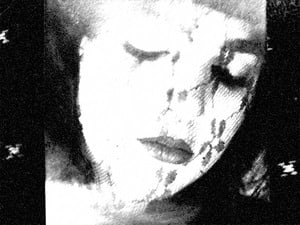William Shakespeare’s Sonnet 127 commences the beginning of the so-called Dark Lady cycle. While the description of physical attributes and the imagery related to the Dark Lady certain indicate that these poems are intended to be read as being addressed to an actual figure, it is also clear from the ambivalence that the author feels towards her that the Dark Lady should also be considered a metaphor for something larger. The Dark Lady can quite readily be considered a symbol of sexual lust that is meant to stand in direct contrast to the beautiful love expressed in the earlier sonnets. Because Shakespeare often expresses regret at feeling passion for the Dark Lady and because he sometimes even denigrates her beauty, it is easy to see how this cycle can be read as contemplation on the often hypocritical emotions attached to raw sexual passion.
The feeling about the Dark Lady engendered by Sonnet 127 would probably not be one that is termed “beautiful” by most people. In fact, Shakespeare’s Sonnet 127 is all about the changing views on beauty, containing as it does both explicit and implicit considerations on the idea of concepts like falsity and truth. For William Shakespeare, the contemporary trend of applying cosmetics to achieve the popular ideal of beauty is nothing less than an absolute bastardization of the whole core of beauty. For years the ultimate ideal of beauty had been those born fair and blonde, but now women are taking to making themselves darker to attain the new ideal.
And yet, William Shakespeare is being hypocritical as well. Although he accuses woman of befouling nature by creating a false face through the use of make-up, he too is presenting a false face. In this sonnet Shakespeare praises the Dark Lady’s beauty, but in later sonnets he will malign it. The key component at work in this sonnet, then, should be considered hypocrisy, or at the very least conflicting duality.
The ideal expression of the thematic conceit of Sonnet 127 is to place both the poet and the Dark Lady in the center of the frame. Rather than separating them, a reading of this sonnet should bring to mind a sense of correspondence between them. Indeed, this sonnet should give the impression that the poet and the Dark Lady are inescapably bound to each other; one can well imagine a portrait based on Sonnet 127 in which their faces meld into each other. There is in Sonnet 127 a very definite sense that the poet is perhaps not being completely honest when he implies that true beauty should be like her. Overriding almost all is the feeling of ambivalence. Again, to return to the idea of a painting based upon the poem, ideally the face of the poet should wear a faint, subtle shade of cosmetic application. He should also be looking away from the Dark Lady, downward to images of fair beauties. In fact, the poet should be looking to iconic images of fair beauties such as Helen of Troy and Isolde, those whose beauty became the ideal to which women had struggled to attain.
The Dark Lady, meanwhile, should be looking away from the poet, her eyes the darkest point in the entire painting. Indeed, her dark eyes and hair should be drawing points for the viewer’s eyes, placed in juxtaposition to the brightness of the rest of the painting. As with the poet, she should be looking away and downward. The tableau she overlooks, however, should not be in direct contrast to the imagery looked at by the poet. If the women she is looking at are not necessarily Helen and Isolde, they should replicate their appearance closely enough. There will be two significant differences, however.
Whereas the fair, blonde and beautiful women of ages past that the poet looks lovingly down upon are engaged in acts meant to suggest gaiety, happiness and delight, the Dark Lady is, naturally, a mourner at a funeral. Not literally, of course. The women the Dark Lady looks down upon do not happily prance about a sunny temple as they do in the imagery observed by the poet. The temple is there, but they have clearly been banished. And rather than interacting with each other, they are isolated, each in their own invisible shell, busily making themselves darker with make-up. This painting should properly engage the vocabulary of the sonnet by addressing its themes of fairness and foulness, as well as truth and illusion.
I’m not a painter; nor an artist. I am no capable of transforming the words of a Shakespearian sonnet into a portrait, but I can imagine. And it’s a very fun thing to do. Not just fun, but creative. It can be used as an exercise to extend one’s creative faculties; not exactly synaesthesia in the denotative sense of the word, but rather a connotative example. Try it sometime and see what you come up with.




